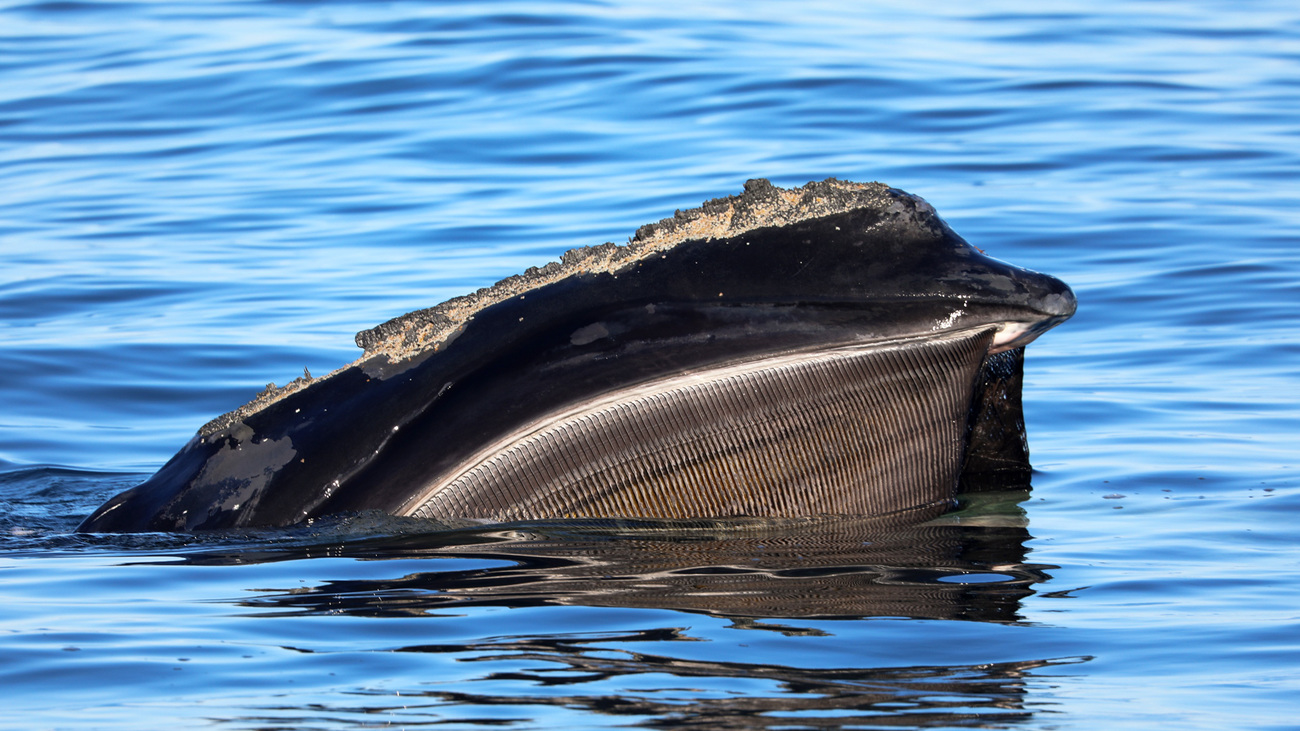Saving the North Atlantic right whale - North America
Don't fail our whaleNew North Atlantic right whale population numbers reinforce need for conservation measures
New North Atlantic right whale population numbers reinforce need for conservation measures

[Washington D.C. - October 24, 2023] Today, the North Atlantic Right Whale Consortium released its official population estimate of 356 individuals. These latest numbers reflect a more accurate UME count based on new, peer-reviewed scientific and veterinary protocol.
In response, Kathleen Collins, senior marine campaign manager with the International Fund for Animal Welfare (IFAW), issued the following statement:
“These population numbers do not indicate a stable population, they are a cry for serious collaboration between industry, government, and stakeholders. Suffering whales do not reproduce and the large number of whales injured and stressed due to human-caused activities is alarming.”
While the population estimate for the previous year does show initial signs that the drastic loss of whales may be slowing (around 364 whales were reported in 2021), there is still great cause for concern and action needed. Right whales continue to face immediate threats from entanglement and vessel strikes, as well as longer term threats such as climate change. As a result, predictive modeling is especially important as is having protections at the ready to avoid a repeat of 2017, when 17 North Atlantic right whales died, triggering the start of the current North Atlantic right whale unusual mortality event, which now numbers 121 documented mortalities, serious injuries, and sublethal injuries. .
Human-caused activities like entanglements and vessel collisions are the main threats to the North Atlantic right whale and leading cause of mortality. However, injuries sustained from these threats are also highly problematic and as a result, the population’s health is suffering. To help the population remain healthy and reproductive, there needs to be an increased focus on improving the overall health of the population, starting at the individual level.
“These individuals are the only North Atlantic right whales that remain on Earth today, with only a small portion consisting of reproductive females,” continues Collins. “The number of calves being born each year is simply not enough to put this species back on track towards growth. From expanded vessel speed restrictions to implementation of on-demand gear, we know what is needed to protect North Atlantic right whales from extinction and we need to act now.”
NOTES:
- Imagery / video can be found via hightail here
- Vessel strikes and entanglement in fishing gear continue to be the primary causes of death and injuries to right whales.
- In fall 2022, NOAA proposed changes to vessel speed limits to further reduce deaths and serious injuries among right whales from vessel collisions. These changes are still being evaluated against substantial opposition from professional and recreational mariners, but they are necessary for the North Atlantic right whale’s survival as a species.
- IFAW and other stakeholders are working to meet the needs of whales and a healthy ocean ecosystem by partnering with fishing communities and mariners to advance pragmatic solutions. IFAW is developing methods to save injured and entangled whales at sea and this is the only project on the US East Coast with the equipment and experienced personnel to deliver medications to fight infections caused by extensive injuries or sedatives to calm right whales so they can be disentangled.
- Additionally, by performing necropsies on stranded right whales, IFAW’s experts are able to determine causes of death and can assess whale health. This critical information is used to evaluate the efficacy of existing conservation policies and to inform future policies needed to ensure population recovery.
- Recently, NOAA went live with their new analytical tool which helps users understand how the right whale population will change over 100 years if threats are mitigated. The analysis from this tool clearly shows that it is not too late for this population if actions are taken now to reduce human impacts on this perilous species.
Related content
every problem has a solution, every solution needs support.
The problems we face are urgent, complicated, and resistant to change. Real solutions demand creativity, hard work, and involvement from people like you.